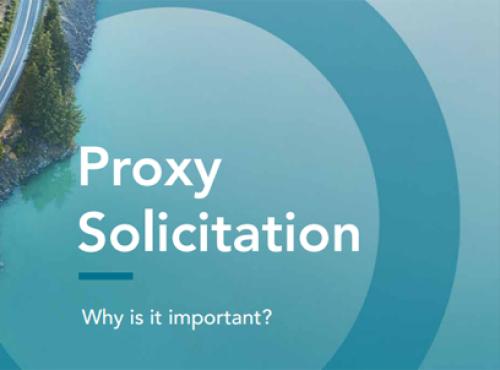IROs at mega-cap companies offer advice on managing the supply and demand challenges of investor relations
Today’s capital markets environment places an increasing responsibility on public companies, particularly their IR function, to meet investor and analyst demands for management access and insights. In this second of a three-part series (read parts one and three here), Edelman shares results of its research into how a collection of 10 blue-chip US companies manage this evolving relationship with both the buy side and the sell side.
While responses vary on how to best manage sell-side and buy-side interest, the one consistent message is IR’s overreaching goal to carefully and selectively prioritize executive management’s time when it comes to interacting with the Street.
• Respondents have, on average, 30 covering sell-side analysts, which is well above the typical sell-side coverage and reflective of the size and popularity of the companies researched.
• A common trend among IROs is to cut back on participating in sell-side conferences and broker-hosted non-deal roadshows, citing a drain on management’s time and diminishing return on investment. The only companies that place an emphasis on conference participation are those that are looking to expand coverage beyond their natural sector (such as retailers being viewed as tech companies, for example).
• On average, sampled companies attend between four and five conferences per year, with one of the events being located outside the US.
• Many companies delegate participation at tier 2 sell-side conferences to senior members of the IR team, though IR is hesitant to participate in a webcast group presentation and prefers to host only one-on-one meetings.
Turning to non-deal roadshows, while they still play a role in the corporate IR circuit, companies are beginning to rethink how they can be more effective for the scheduling of meetings.
• Respondents average six to seven non-deal roadshows per year, which typically includes involvement from the C-suite as well as business unit heads rotated based on availability.
• Many IR teams are moving toward hosting more events at their company headquarters, where they can make best use of having senior management centrally located. A recommendation includes scheduling a post-earnings call lunch for all sell-side analysts.
• Another common recommendation is to schedule buy side-focused events arranged by a corporate access team. These events are generally at HQ and include presentations by business leaders and a sponsored lunch that both the CEO and CFO attend.
While the overall trend among IROs is to consolidate management’s time with the sell side, respondents overwhelmingly agree there is no substitution for communicating with the buy side.
• IR teams receive on average 75 in-bound calls from a collection of current and prospective shareholders per month, with heightened call volume following earnings.
• IR is 100 percent responsible for fielding and returning incoming inquiries, with C-suite executives and business leaders not needed to participate in routine investor calls.
• There is a common mandate at large and mega-cap companies that the C-suite meets with its top 20 shareholders in person once a year through roadshows to major markets. These are scheduled and co-ordinated in-house.
• Senior members of the IR team are responsible for one-on-one meetings with tier 2 and tier 3 shareholders. Multiple respondents mention that at least one member of their team travels each week to meet with the buy side. Edelman recommends companies set an appropriate quiet period that limits communications with the Street ahead of a scheduled earnings release.
Lastly, the issue of corporate governance has become a larger part of IR’s communication strategy. The timing of shareholder engagement around governance topics has expanded beyond just proxy season with most respondents mentioning the implementation of a full-year campaign to discuss topics related to executive compensation and overall improvements in corporate governance policies. While it’s not yet majority practice, companies are moving more toward having board members occasionally communicate with top shareholders, with the involvement of IR and the general counsel. Edelman recommends that this practice be carefully considered and only involve board members who are properly prepared to speak with investors.
Other articles in this series:
Blue-chip best practice: Part one – team structure and skill sets
Blue-chip best practice: Part three – earnings, events and social media
Ted McHugh is vice president of financial communications & capital markets at Edelman










